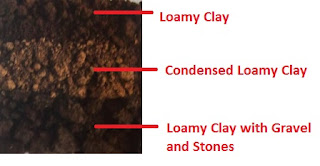The Aconcagua wine region encompasses both Casablanca Valley and Aconcagua Valley. It is the latter that is the subject here. Aconcagua Valley is named for the 22,841-foot mountain peak that towers in the distance, the second largest peak in the world. It is split between a hot, dry interior region 80 kilometers from Santiago and a more moderate coastal area. In the interior lies a commune that has been making very high quality Bordeaux-inspired wines for 140 years, and is continuously gaining international recognition: Panquehue.
Panquehue was first planted with wine grapes in the 1870s by Don Maximiano Errázurriz, a member of the very influential Basque family that arrived in Chile in the 1750’s and has produced four Chilean presidents, two Archbishops of Santiago, and numerous other significant writers and businessmen. Don Maximiano saw potential in the region for Bordeaux blends after having spent a year in Europe and enjoying Bordeaux’s finest.
Maximiano sent for the finest French clones and planted them here. (French varietals were preferred to Spanish varietals due to the bad blood between the Chileans and the Spanish after independence was gained. Chileans wanted nothing to do with anything Spanish. Thus the people turned toward other varietals, of which the best known and most readily available were the Bordeaux grapes. Now some Italian grapes are being grown with great success as well.) The success of his namesake winery has paved the way for Panquehue’s burgeoning wine industry.
 |
| Errazuriz Winery, Panquehue |
Panquehue’s location and soil give it a unique advantage for wine production. The cool Pacific breeze due to the Humboldt Current reaches the valley giving it a Mediterranean climate with warm summers and cool winters. This allows a long ripening season. The wind begins late in the morning and picks up force throughout the day, so botrytis is rarely a problem. A good temperature variation of about 40 degrees Fahrenheit between day and night allows grapes to keep their acidity while ripening well.
The soil profile is particularly distinct: a layer of loamy clay with a good lime concentration and excellent drainage goes to 70 centimeters in depth, followed by a 50 centimeter thick layer of the same, but more compacted, all atop loamy clay mixed with rocks down to 2 meters. The water table here rises to about 10 meters. This adds up to the fact that water is not a problem, especially as the fresh Andes snowmelt can be captured efficiently.
This region has been dominated by the Errázuriz estate for more than 100 years. As the company expanded it produced more jobs, employing many of the locals. An attitude of conservatism exists here that makes it rather difficult for newcomers to build successful businesses, though some attempt anyway, and occasionally with huge success.
Panquehue is capable of producing wines with great concentration and complexity. The unusual soil is a perfect haven for the roots of Carmenere, Cabernet Franc, and Petit Verdot; the rocky hillsides are suited well to Cabernet Sauvignon and Syrah. Overall these wines may be the richest, chewiest, most intense wines of Chile.



No comments:
Post a Comment